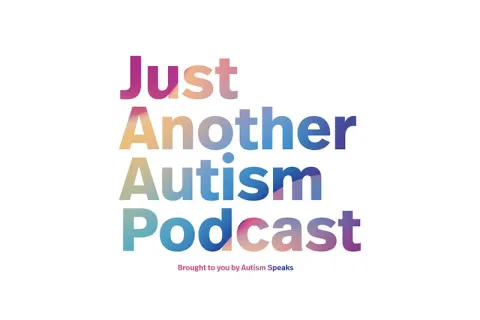How to make the holidays more meaningful for yourself and your autistic loved ones
Expert advice from a community of autistic friends
By Lydia WaymanWhile the winter holidays have become a season of high expectations for everyone, they can be especially stressful for autistic people and their families. Changes in routine, increased social demands, new activities and sensory experiences, and unfamiliar foods can be challenging.
So how can you manage the hustle and bustle or help your autistic loved one cope? To find out, I reached out to my community of autistic friends and their loved ones. Below you will find what they shared with me, grouped by their most common holiday challenges.
What may surprise some of you is that making the holidays more enjoyable for and inclusive of autistic people and their families is not necessarily about avoiding these challenges. It is also about doing more of what an autistic person loves about the season.
Perhaps the most important piece of advice though, whether you are gearing up for Christmas, Hanukkah, Kwanzaa, New Year’s or Three Kings Day, is that everyone should celebrate in a way that best works and is most meaningful for them.
Sensory experiences
Many holiday celebrations and events involve a lot of sensory stimulation. Sometimes that may be challenging. But other times that can be the source of comfort or excitement. For example, in response to my post on social media asking autistic people what they loved about the holidays, one answer came up over, and over, and over: holiday lights.
“The lights. I love driving around and seeing them.” – Bonnie T., 58
“We look forward to Holiday lights from the quiet of the car. We drive around town and discuss who decorates the very best.” – Dawn M., mother of H., 17
“We look forward to the holiday season so Bewlay can go into the Christmas tree section of home improvement stores and spin around, enjoying the lights.” – Christy K., mother of Bewlay, 20
If lights are not your or your loved one’s thing, there are plenty of other fun sensory experiences you can add to your holiday celebrations, like:
- For those who like to move and live in a snowy climate, try sledding, building snowmen, or taking walks or hikes outside.
- For those who like the snow but hate the cold or live in a warm climate, make some fake stuff inside. Check out our Sensory-Friendly Activities page to find out how.
- For those who love water, go swimming. If you are in a cold climate, visit an indoor pool.
- Choose holiday decorations for the home that appeal to sensory preferences around music, scent, and touch.
- Baking can be a fun activity to do together. If a recipe is not helper-friendly, offer the baking assistant their own bowls, spoons and simple ingredients for some messy fun.
- Create a calming space to take breaks. You can even incorporate a holiday theme, like soft white Christmas tree lights, festive pillows or blankets or favorite holiday music.
Routines / Traditions
Many families hold their traditions close to their hearts because of the memories associated with them. For an autistic person, traditions offer the added benefit of familiarity and routine. When experiences feel more familiar, it is easier to enjoy them rather than using up energy worrying about what might happen next.
“I love the fact that for the holidays I know what to expect and I get excited. Like cookie decorating, driving and looking at Christmas lights, and eating latkes. These are all predictable things I can expect.” – Chloe R, 30
“My friend who is autistic likes doing the same [two] Christmas trees every year, in the same spot in the same rooms, decorated exactly the same.” – Renee W.
Of course, it takes time and consistency for any experience to become familiar and even longer for it to be a source of comfort. But there are ways you can help the process along.
- Take lots of photos during the holidays of the people, places, and activities you encounter. Create an album, in hard copy or a digital version, that you can use to prepare for the next year.
- Create structure around things like decorating, baking, and gift opening. For example, use visual schedules, lists or timers/countdowns.
- If you host a party or dinner, consider letting guests know that there will be a schedule such as what time gifts will be exchanged or when dinner will be served.
- If you attend religious services, try to go to the same location, at the same time and sit in the same seats. It is easier to focus on the reason you’re there if your anxious thoughts and environment isn’t taking up so much attention.
Gifts
Gifts are usually a big part of the holiday season. Choosing a gift that is meaningful to an autistic person is one way to show acceptance, respect, and to build a stronger relationship. Giving gifts offers a chance to show others that they are appreciated.
“Using one’s talent and/or special interest to create unique gifts can be a way to express love. For me, this makes gift planning and giving quite special, because I put a lot of thought and love into creating or planning gifts for my loved ones, which tends to be knit and crochet items. Acts of service can be subtle “gifts,” like cleaning up after cooking a big meal.” – Emme G., 36
“One of my best gifts this year is going to Disney World with my two friends and our moms so that we can all enjoy the magic together in person.” – Conner C., 30
“One of my most special gifts from my son is a Mickey Mouse stuffed animal he gave me so I can hug it when I am falling asleep and have magic in my dreams.” – Sharon C., Mother of C., 30
Here are some ways to make gift exchanges less overwhelming and more meaningful.
- Role play gift giving, receiving, and opening in the weeks leading up to the real celebration.
- Choose gifts that are meaningful to the individual. Consider their special interests and sensory preferences. This might mean choosing something that is not marketed toward their age or gender. It may mean a nontraditional gift, like something for a collection they have, an experience or even something homemade.
- If an individual has an item they are particularly attached to — certain clothing, a toy, a sensory fidget — consider getting a “just in case” backup or replacement for when it wears out. If the individual is still growing, always buy favorite clothing in a bigger size. Even though you are giving them something they already have, the security of a backup can be very reassuring, especially if it’s a harder-to-find item.
- If you are helping an autistic person choose gifts for others, find out what would be meaningful based on the relationship with that person. If they choose something that seems unusual, find out why it is meaningful to them in that relationship before suggesting they do something different.
- If you or an autistic loved one want to give gifts but find shopping is challenging, consider a homemade gift like artwork, a video message or handwritten note, or baked goods/treats. Maybe you like to make your own snack mix. Mix it up and put it in a jar with a bow on top.
- Shopping online is a great way to browse without having to face crowds in the store or at the post office.
- Gift opening can be overstimulating and overwhelming. Some people love the sensory experience of tearing all the paper off and find it hard to open one gift at a time. Others prefer to take it slow, taking a break between each gift, or even open gifts over several days. Whether the autistic person opens gifts at a different pace or the family joins them, it f taking it at a more comfortable pace means they can enjoy the experience, it’s worth it.
Read more about how to make the holidays merry and bright:
Home for the holidays: Ways to make sure your autistic child enjoys their break
Autism-friendly holidays: How to make sure all is calm when all is bright
Holiday Safety Plan: Preventing meltdowns, wanderings and accidents
About the author
Lydia Wayman is an autistic advocate with a B.S. in education and an M.A. in English and nonfiction writing. Through her presentations, writing, and art, she uses her experience to support families and professionals by helping them understand how autistic kids see the world. She has worked at an autism resource center, mentored youth with disabilities, and spoken at Girl Scout events, parent-led groups, and conferences with her autistic peers. Her writing has appeared in magazines, books, and newspapers, and she has helped to develop several training programs and professional courses. Her work for Autism Speaks includes articles on Working from Home and Social Media, and the Roadmap to Self-Empowerment for Autistic Adults, among others.










